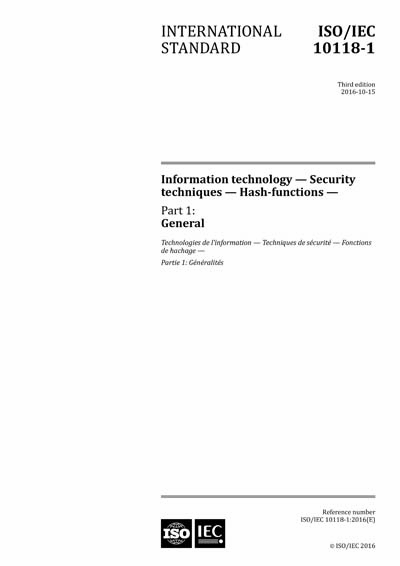Most recent
ISO/IEC 10118-1:2016
Information technology - Security techniques - Hash-functions - Part 1: General
ISO/IEC 10118-1:2016 specifies hash-functions and is therefore applicable to the provision of authentication, integrity and non-repudiation services. Hash-functions map strings of bits of variable (but usually upper bounded) length to fixed-length strings of bits, using a specified algorithm. They can be used for
- reducing a message to a short imprint for input to a digital signature mechanism, and
- committing the user to a given string of bits without revealing this string.
NOTE The hash-functions specified in ISO/IEC 10118 (all parts) do not involve the use of secret keys. However, these hash-functions may be used, in conjunction with secret keys, to build message authentication codes. Message Authentication Codes (MACs) provide data origin authentication as well as message integrity. Techniques for computing a MAC using a hash-function are specified in ISO/IEC 9797‑2 [1].
ISO/IEC 10118-1:2016 contains definitions, symbols, abbreviations and requirements that are common to all the other parts of ISO/IEC 10118. The criteria used to select the algorithms specified in subsequent parts of ISO/IEC 10118 are defined in Annex B of this document.
International Organization for Standardization [iso]

